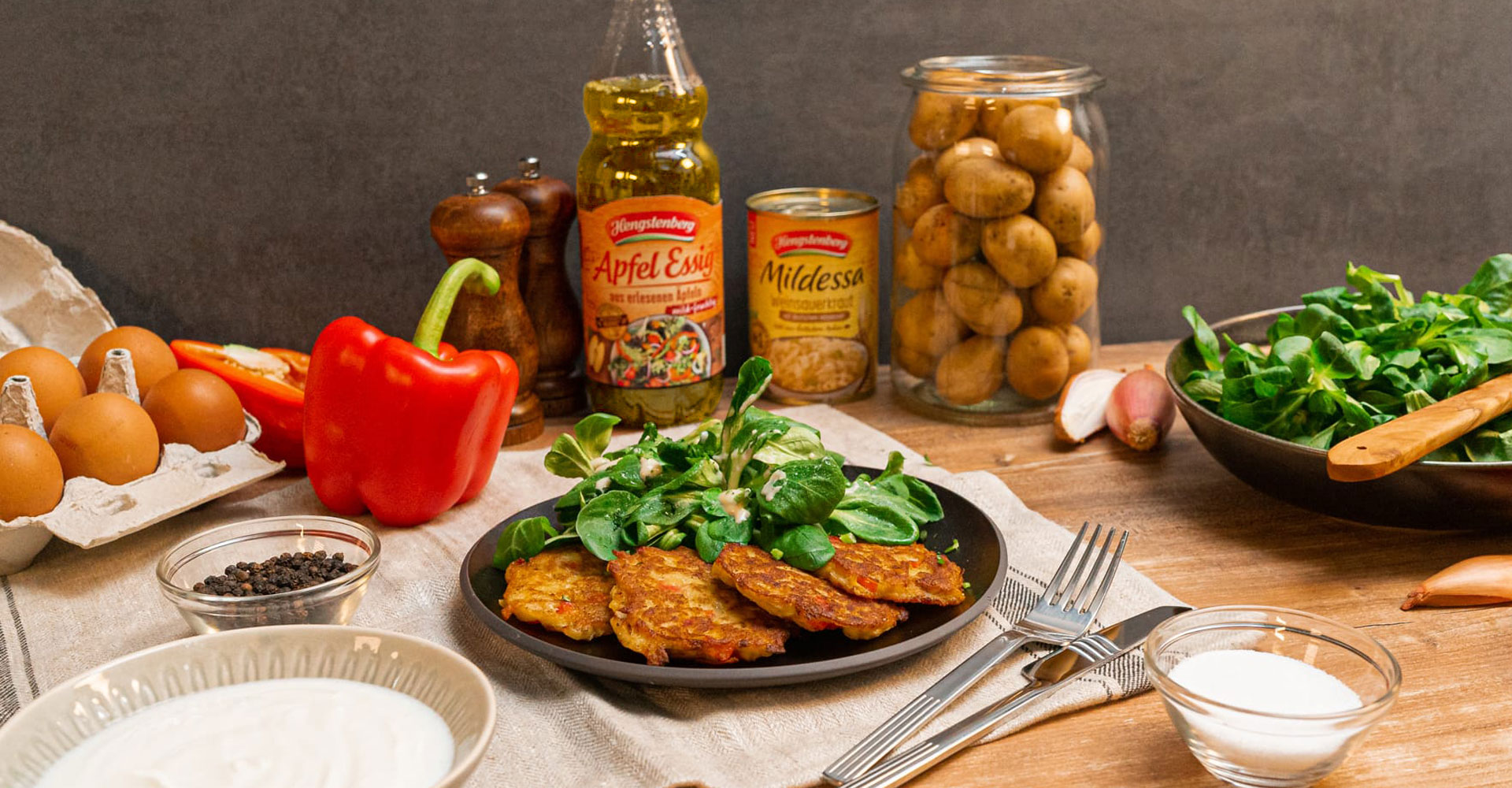Germany is considered a sauerkraut nation - especially in international perception. During world war, English and American opponents even called Germans "Krauts". And the term is still used today. As a side note, however, the per capita consumption of sauerkraut is higher in the US and France than in Germany. Fact is: Sauerkraut is often part of classic and rather hearty cuisine - but you can also use it for fine dishes and we invite you to explore new creative ways preparing it.
All about sauerkraut
On this page you will find the most important things you should know about sauerkraut: from the cultivation and history of the fermented cabbage to ingredients and spices, up to the global distribution of sauerkraut.

Prologue
What is sauerkraut made from?
The basic ingredient of sauerkraut is white or pointed cabbage. White cabbage is a particular variety of cabbage and is in season during autumn and winter. It is often used for hearty dishes such as stews or cabbage rolls. Pointed cabbage, as the name says, is pointed on one end and related to white cabbage but is usually harvested in spring and thus called "summer cabbage".
The two cabbages also differ in taste. For example, pointed cabbage is more delicate and subtle in flavour than white cabbage. Ultimately, sauerkraut can be made from any white cabbage and pointed cabbage.

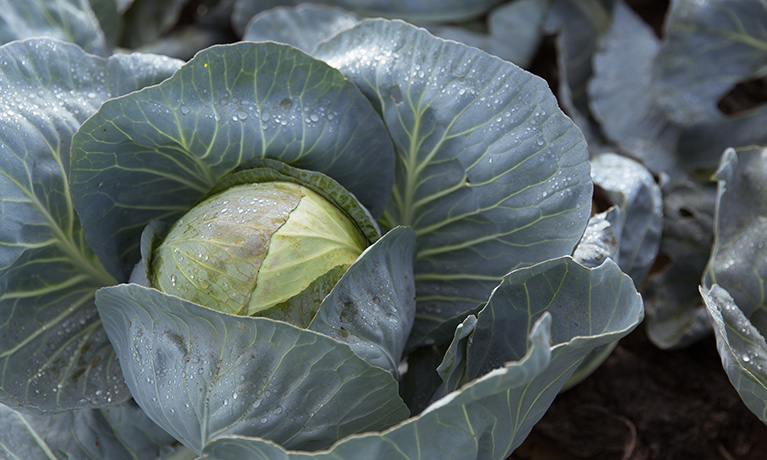

From the field into the packaging: The Mildessa sauerkraut

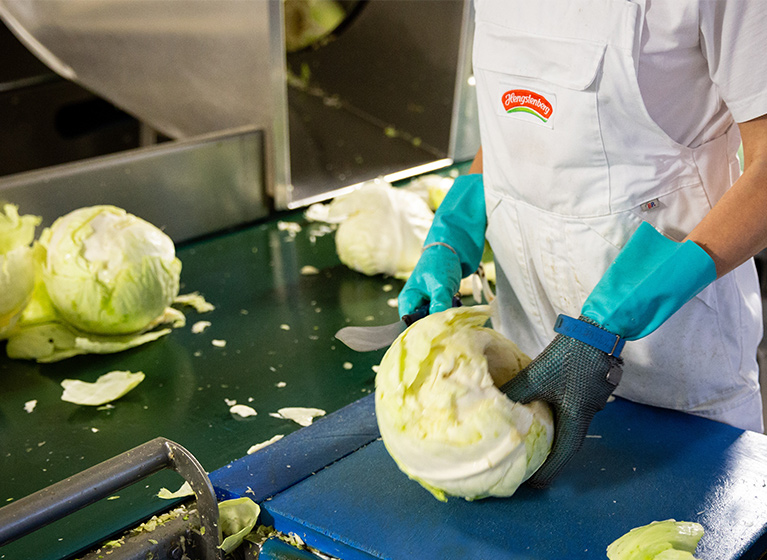
The white cabbage, freshly harvested in Germany, makes a short journey from the fields to be further processed on our factories. After the first quality check, the cabbage head is freed from the outer, green leaves, the non-edible part of the stalk is removed and the cabbage is carefully cleaned. Now the prepared cabbages are evenly sliced and fermented in large fermentation tanks under the addition of salt. The naturally contained lactic acid bacteria cause the cabbage to ferment. In this process, the sugar in the cabbage is converted into lactic acid. When the desired degree of acidity is reached, the cabbage is removed from the tanks, put into jars or tins and then briefly heated. The gentle pasteurisation process stops the lactic acid bacteria from doing their work and the sauerkraut stops fermenting. You can find more information about the production process in our section "From the field to the jar".


The advantages of preserved sauerkraut
Lactic acid fermentation preserves white cabbage. We stop the fermentation process by heating the sauerkraut to get a deliciously mild, not too sour taste. One way to ensure that food is germ-free and shelf-stable is to pasteurise it. Canned sauerkraut is therefore always pasteurised. This makes the sauerkraut, which already has a long shelf life, last even longer - without any preservatives.
Innovation in a can: Hengstenberg makes sauerkraut available all year round
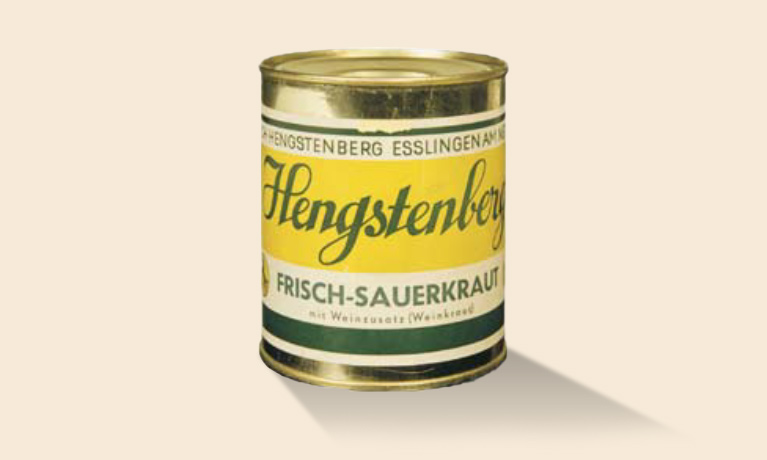

The first attempts to get the sauerkraut into cans resulted in a series of explosions. The reason: the carbonic acid from fermentation expanded after the pasteurisation process. After a period of development, Hengstenberg solved the problem and launched the first canned sauerkraut in 1932.
The real revolution was that from then on, the availability of sauerkraut was no longer limited to a few weeks in autumn and winter, but sauerkraut lovers could enjoy sauerkraut all year round.

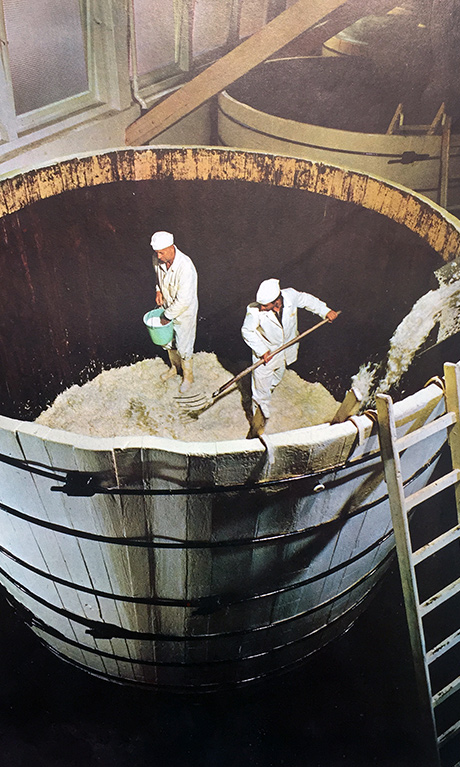
Sauerkraut does not continue to ferment in the tin
Fresh sauerkraut contains lactic acid and lactic acid bacteria. These bacteria cause the natural sugar in the cabbage to break down and produce lactic acid. They are the reason why white cabbage becomes real sauerkraut.
To ensure that the sauerkraut always has the same taste after each production, we wait until a certain level of acidity has been reached. The resulting sauerkraut is gently pasteurised to kill the lactic acid bacteria that are still alive. However, the lactic acid remains - the sauerkraut does not ferment further and retains a hint of its natural sweetness.
Sauerkraut is rich in vitamin C and low in calories

The pasteurization process largely preserves the natural vitamin C of sauerkraut. Sauerkraut is therefore a natural source of vitamin C with 20 milligrams per 100 grams of sauerkraut. This is already 25% of the daily requirement according to the German Nutrition Society (DGE). With 22 calories per 100 grams, sauerkraut is not only rich in vitamin C, but also particularly low in calories. Of course, it depends on the further preparation: Sauerkraut refined with heavy cream or as a curry stew is of course less convincing as a light dish, but it also tastes absolutely delicious.
Where does sauerkraut come from?
Sauerkraut is not a German invention. There are various plausible theories how sauerkraut came to Germany:
During the conquests of the 13th and 14th centuries, the Mongols brought the method of preserving cabbage by lactic acid to Europe. They started by conquering parts of China, where lactic fermentation was a well-known method of preservation. If the Mongols did not yet know the lactic fermentation process, they learned about it in China. After their cavalry troops left Europe, they may have left behind their knowledge of how to make sauerkraut. After all, there are a striking number of sauerkraut recipes in Eastern European cuisine. And indeed, sauerkraut has been recorded in Germany since the Middle Ages (14th century) as "sawer craut".
However, it is also possible that the sauerkraut tradition originated in ancient Rome and Greece. The Romans recognised that sour, like vinegar, helps digestion. They poured vinegar over whole cabbages, added salt and let it ferment. Barrels of sauerkraut continued to be a reliable source of nutrients for soldiers on military campaigns long after the fall of the Roman Empire.
In the 18th and 19th centuries, German immigrants in the USA prepared traditional recipes from their homeland - also as a remedy for homesickness. While those German immigrants created a piece of home, the British valued sauerkraut as a remedy for scurvy (caused by vitamin C deficiency). Even before the Declaration of Independence, sauerkraut was served in North America - and gradually became more and more part of US food culture. At some point, the German word was adopted into English as "sauerkraut".
By the way, on the subject of scurvy:
Sailors used to travel long distances to faraway parts of the world. Fresh food containing vitamins could not be cooled on board - and quickly went bad. The one-sided sailor's diet consisted largely of grain and cured meat. This is how scurvy was able to make a name for itself as a "sailor's disease": People on sea suffered from a considerable vitamin C deficiency after months - fell ill and died of it. It was not until 1768 that the Englishman James Cook put an end to it by daring a culinary experiment: he stored sauerkraut and lemon juice in his ships' holds - and hardly lost any of his men to scurvy.
Where do the terms Limeys and Krauts come from?
As a colonial power, England had exotic limes and lemons that they took with them to sea. This later earned them the nickname "Limeys". The German sailors, however, had no exotic vitamin C bombs to take with them. They reached for sauerkraut and were named "Krauts" by the English because of their high consumption.
If you now have an appetite for hearty dishes with sauerkraut, you can find more inspiration in our recipes section.
Recipes you can make with sauerkraut
How to season traditional sauerkraut
Bay leaves, juniper berries and caraway are popular spices for the classic preparation of sauerkraut. Depending on your taste, you can refine the sauerkraut with salt, pepper or some broth. You can't go wrong with this classic seasoning - especially if you want to serve meat with the sauerkraut as side dish.


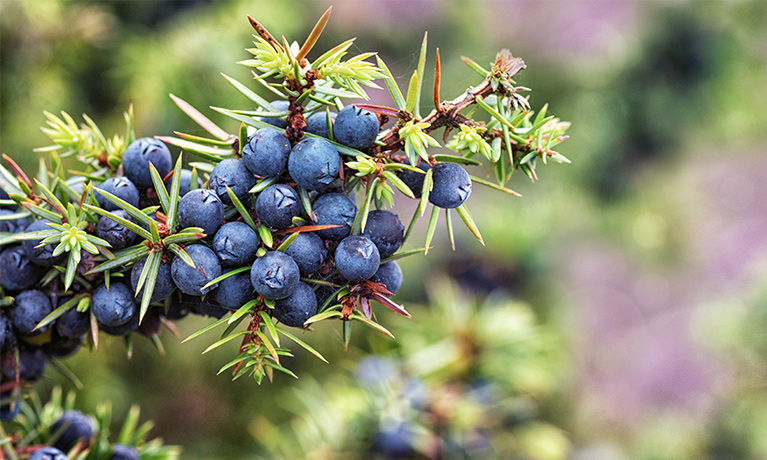
Sauerkraut from around the world
Sauerkraut is known and famous all over the world. In Germany we usually eat sauerkraut with hearty dishes but what about the USA or Asia? Well, cabbage is also part of the local cuisine there and is used in many classic dishes...

Americans like sauerkraut in hot dogs and sandwiches
In 1871, German immigrant Charles (Karl) Feltman opened the first hot dog restaurant in New York: the Feltman Restaurant and Beer Garden. The sausage in a bun was served with a side rich of vitamin C: Sauerkraut. New York has even more sauerkraut to offer: Along with two slices of rye bread, corned beef, Swiss cheese, onions, horseradish, lemon juice, parsley, paprika and a sauce of ketchup and mayonnaise, sauerkraut is an ingredient in the Reuben sandwich.
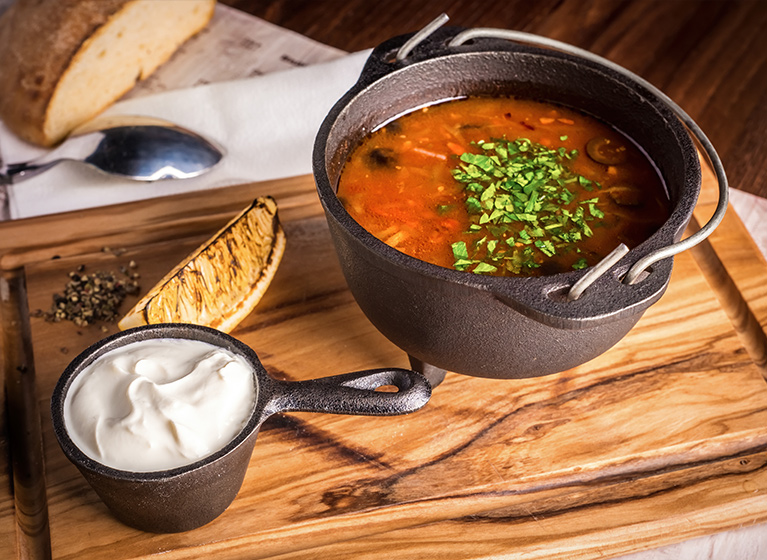
Sauerkraut in Russian "Soljanka“
In Eastern Europe and Russia, German immigrants were not able to surprise in culinary terms. The exact opposite was the case, because they were surprised there by how sauerkraut can be prepared in a different way. In Russia, they make the popular soup "Soljanka" with it.

Sauerkraut in "Rakott káposzta" from Hungary
Hungary shows with the dish "Rakott káposzta" that sauerkraut can also come out of the oven, namely as layered cabbage. It also fits perfectly in Hungarian goulash, refined with sour cream and white wine.
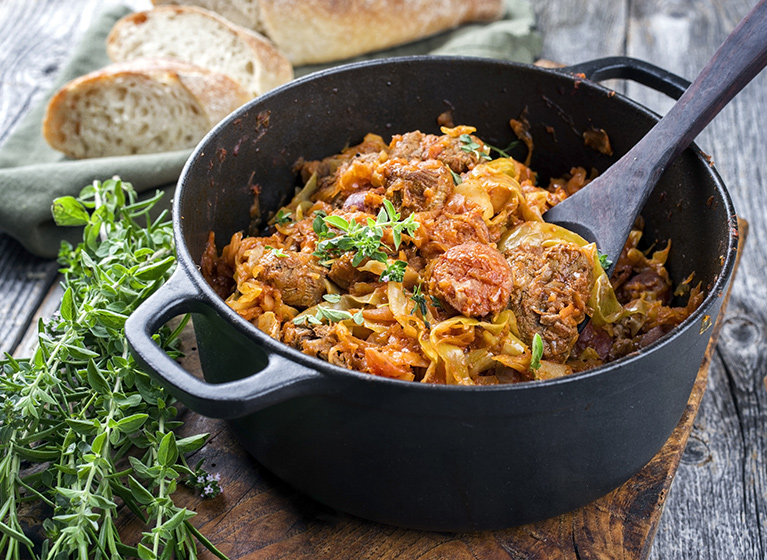
Sauerkraut in Poland's national dish "Bigos“
Bigos is a stew made of sauerkraut, white cabbage, beef, game and pork and is seasoned with allspice, bay leaf and tomato paste. Bigos is particularly popular in winter and is very popular because of its long shelf life - and because "Bigos" simply tastes good.
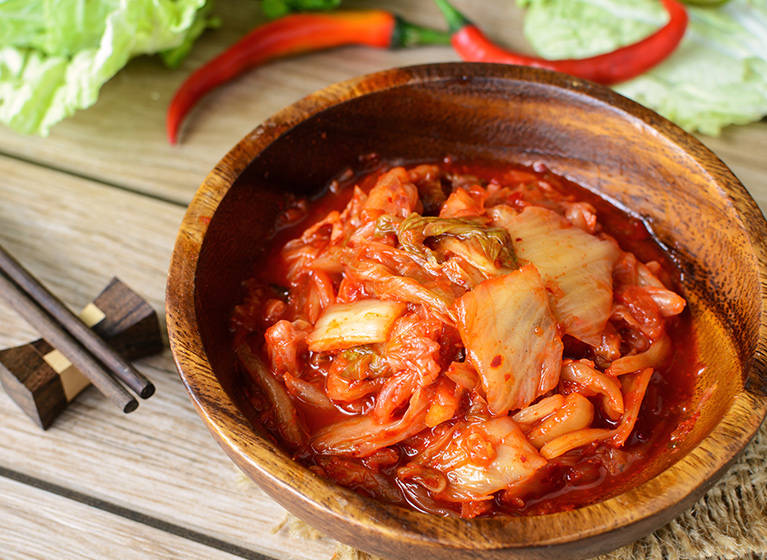
Kimchi - the Korean sauerkraut
The similarity between kimchi and sauerkraut is unmistakable: kimchi is a traditional Korean dish. Instead of white cabbage, Koreans resort to Chinese cabbage, which they ferment using lactic acid. Kimchi is the spicy sister of sauerkraut, you could say: The cabbage is refined with radish, ginger, chili powder and garlic.




